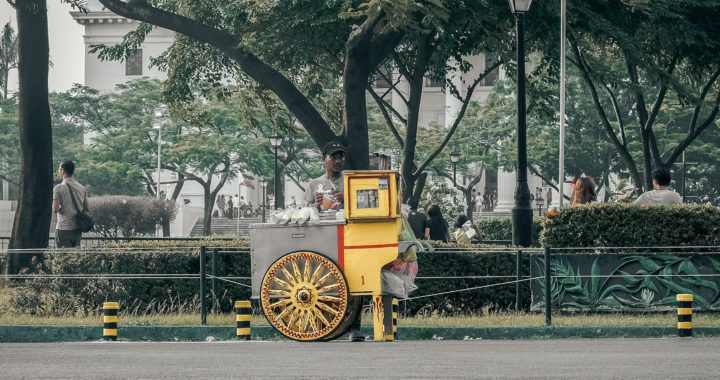Most foreigners and even some locals often use “Manila” to refer to the metropolitan area called Metro Manila. However, this is quite inaccurate. Manila is actually the capital city of the Philippines and one of the cities of Metro Manila or the National Capital Region.
It is crucial to keep the aforesaid distinction in mind, especially for tourists and new migrants. Manila has characteristics that set it apart from other cities in the metropolitan area. Consider its notable tourist destinations as an example.
Exploring the City of Manila: Top 4 Tourists Destinations
1. Intramuros: The Walled City
One of the historical landmarks of Manila is Intramuros. Also known as the Walled City, it was built in 1571 by Spain and was the seat of government and political power during the time when the Philippines was a colony of the Spanish Empire.
Today, the landmark features specific tourist attractions such as historic buildings and museums, lodging establishments, and restaurants.
Some of the top attractions inside the Walled City are the Fort Santiago where national hero Jose Rizal was imprisoned before his execution in 1896; the Manila Cathedral characterized by its painted dome and vaulted ceiling; the monastery-complex San Agustin Church that houses priceless collection of religious art; and museums such as the Bahay Tsino and Casa Manila.
Tourists can also explore the different streets within Intramuros to appreciate cobblestone walkways, old stone houses, and modern community life, as well as climb the different bulwarks of the area such as the iconic Baluarte de San Andres and Baluarte de San Diego.
What is more interesting is that Intramuros offers a respectable range of food choices for foodies alike. These include Ilustrado, Barbara’s Heritage Restaurant, Ristorante delle Mitre, Patio de Conchita, and Coco Bango Cafè, among others.
There are also restaurants inside the Bayleaf Intramuros Hotel, as well as establishments from commercial food chains such as Jollibee, McDonald’s, and Max’s Restaurant. As a bonus, tourists can also indulge in Filipino street food sold by street vendors located along Muralla St. and its adjacent streets.
2. Rizal Park: A Historical Urban Park
Rizal Park or Luneta Park is a 58-hectare urban park located along Roxas Boulevard and adjacent to Intramuros. Named after Jose Rizal, it is one of the largest urban parks in Asia offering various attractions and activities.
Within the park are gardens although most of them such as the Chinese Garden and Japanese Garden need a considerable do-over. There are also artworks and monuments inside Luneta. These include a diorama depicting the execution of Rizal, a relief map of the Philippines on a human-made and miniaturized lake, the Flower Clock, La Madre Filipina sculpture, the Independence Flagpole considered as the highest flagpole in the country, and of course, the iconic Rizal Monument.
For museum enthusiasts, the park houses the National Planetarium, the National Museum of Anthropology, the National Museum of National History, and the National Museum of Fine Arts, and Manila Ocean Park. The National Library of the Philippines, the premium public library of the country, is also located inside Rizal Park.
3. Binondo District: The Chinatown
Binondo might be chaotic but it arguably a worthwhile tourist destination in Manila due to its unique characteristics that differentiate it from other districts within the city and the entire Metro Manila. Established in 1594 and considered as the oldest Chinatown in the world, it was home to the first Chinese settlers in the country and has now become an artifact of Filipino-Chinese culture.
There are two things a tourist can do in Binondo: shop and eat. It is a premier destination for bargain shopping. Establishments sell a range of products from clothes, accessories, and other textile products, to home furnishing, tableware, and herbs. Note that it is also near Divisoria, a commercial center within the nearby district of Tondo.
An array of restaurants has thrived within the streets of Binondo offering authentic Chinese cuisine. For example, Dong Bei Dumplings serves freshly made northern style dumplings while Masuki sells chicken and beef mami noodles. Other go-to establishments include Royal Garden that has been known for its exotic Chinese dishes and Quan Yin Chay that serves mock meat and other vegetarian dishes.
The Chinatown district is also home to Filipino-Chinese pastries, most notably the bean-filled mooncake-like delicacy locally known as hopia. Holand Hopia & Bakery sells old-fashioned hopia while Eng Bee Tin offers a range of sweet delicacies such as different variants of hopia and authentic mooncakes.
Exploring Binondo would not be complete without visiting its famous landmarks. Note that the Binondo Church is one of the oldest Catholic church in the country. Tourists can also light incense sticks in two notable Buddhist temples in Manila: the Kuang Kong Temple and Seng Guang Temple. Escolta street is home to a few surviving art deco and neoclassical architectural buildings in the country.
4. Ermita and Malate: Nightlife
The districts of Ermita and Malate might have lost their charm as havens for nightcrawlers to more current destinations in Metro Manila such as the upscale Bonifacio Global City, but they still offer an assortment of nightlife activities.
Although they do not have posh superclubs and wine bars found in newly developed areas in the Metro, some of its streets are still sprawling with pubs, music lounges with live band performances, and KTVs. There are also go-go bars while a handful ones cater to LGBT patrons.
If one is not up for drinking, Ermita and Malate can be a good destination for a night food crawl. The districts have hosted numerous Chinese and Japanese restaurants. Establishments serving Filipino heritage cuisines also exist in the areas. These include the Aristocrat Restaurant, Ang Bistro Sa Remedios, and Café Adriatico Premier.
Due to the influx of tourists and migrants from South Korea, both districts are slowly transforming into a mini-Koreantown. Korean restaurants serving samgyeopsal have sprouted in several streets. There are also Korean groceries selling imported Korean goods and food items.





